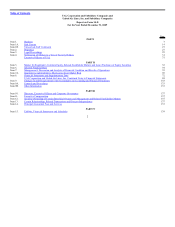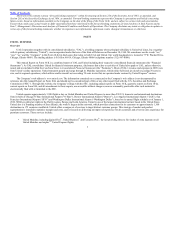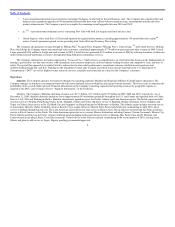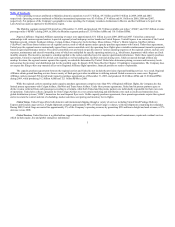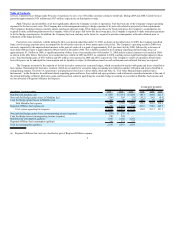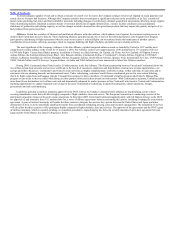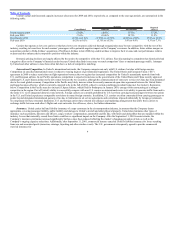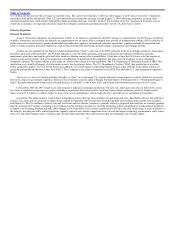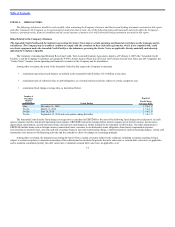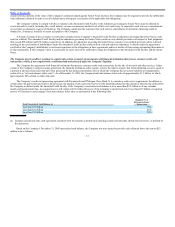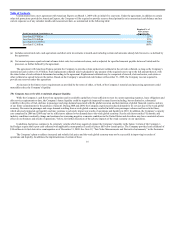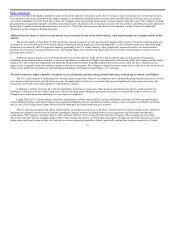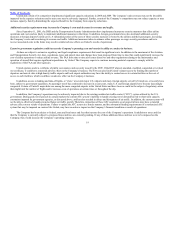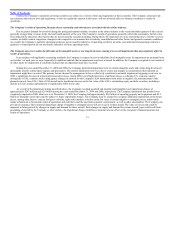United Airlines 2009 Annual Report Download - page 16
Download and view the complete annual report
Please find page 16 of the 2009 United Airlines annual report below. You can navigate through the pages in the report by either clicking on the pages listed below, or by using the keyword search tool below to find specific information within the annual report.
Table of Contents
In December 2009, the United States and Japan reached agreement on the text of an open skies agreement to replace the 1952 bilateral agreement on air
service between the United States and Japan. The open skies agreement is expected to enter into force in the fall of 2010, subject to the satisfaction of certain
conditions precedent. Pursuant to the agreement, any U.S. or Japanese carrier will be able to fly between any point in the United States and any point in Japan
and, in the case of U.S. carriers, beyond Japan to points in other countries the carrier is authorized to serve. The agreement will also eliminate the restrictions on
the number of frequencies carriers can operate, and require governments in both the United States and Japan to concur before taking action to regulate a carrier’s
fares or rates.
Also in December 2009, United and Continental applied jointly with All Nippon Airways to the DOT for approval of, and immunity from U.S. antitrust
laws for, a series of alliance agreements between and among the carriers, including a transpacific joint venture agreement. This application is currently pending.
See Alliances, above, for additional information.
Environmental Regulation.
The airline industry is subject to increasingly stringent federal, state, local and foreign environmental laws and regulations concerning emissions to the air,
discharges to surface and subsurface waters, safe drinking water and the management of hazardous substances, oils and waste materials. New regulations
surrounding the emission of greenhouse gases (such as carbon dioxide) have been adopted and are otherwise being considered for promulgation both
internationally and within the United States (which is discussed further below). United is carefully evaluating the impact of such new and proposed regulations.
Other areas of developing and/or new regulations include the State of California rule-makings regarding air emissions from ground support equipment and
federal rule-makings concerning the discharge of deicing fluid and the regulation of aircraft drinking water supplies.
Future environmental regulatory developments, such as in regard to climate change, in the United States and abroad, could adversely affect operations and
increase operating costs in the airline industry. Some climate change laws and regulations that have gone into effect apply to United, including environmental
taxes for certain international flights (including the United Kingdom’s Air Passenger Duty), limited greenhouse gas reporting requirements and land-based
planning laws which could apply to airports and could affect airlines in certain circumstances. In addition, a 2009 EU Directive required EU member countries to
enact legislation that would include aviation within the EU’s existing carbon emissions trading scheme, effective in 2012. The legality of applying such a scheme
to non-EU airlines has been widely questioned. In December 2009, the Air Transportation Association, joined by United, Continental and American Airlines,
filed a lawsuit in the United Kingdom challenging regulations that transpose into UK law the EU emissions trading scheme as applied to U.S. carriers. In
addition, non-EU countries are considering filing a formal challenge before the United Nations’ International Civil Aviation Organization with respect to the
EU’s inclusion of non-EU carriers. It is not clear whether the trading scheme will withstand such challenges. If the scheme is found to be valid, however, it could
significantly increase the cost of carriers operating in the EU (by requiring the purchase of carbon credits), although the precise cost to United is difficult to
calculate with certainty due to a number of variables and will depend, among other things, on United’s carbon emissions from flights to and from the EU and the
price of carbon credits. The precise nature of any such requirements and their applicability to United are difficult to predict, but the impact to the Company and
the aviation industry would likely be adverse and could be significant, including the potential for increased fuel costs, carbon taxes or fees, or a requirement to
purchase carbon credits.
The airline industry is also subject to other environmental laws and regulations, including those that require the Company to remediate soil or groundwater
to meet certain objectives. Compliance with all environmental laws and regulations can require significant expenditures. Under the federal Comprehensive
Environmental Response, Compensation and Liability Act, commonly known as “Superfund,” and similar environmental cleanup laws, generators of waste
materials and owners or operators of facilities, can be subject to liability for
12


